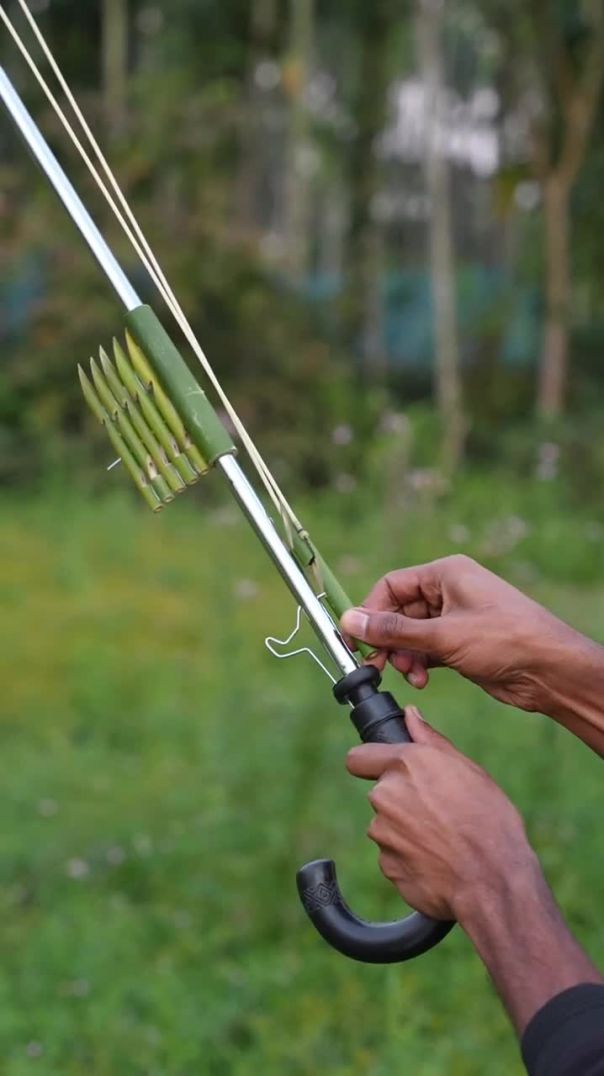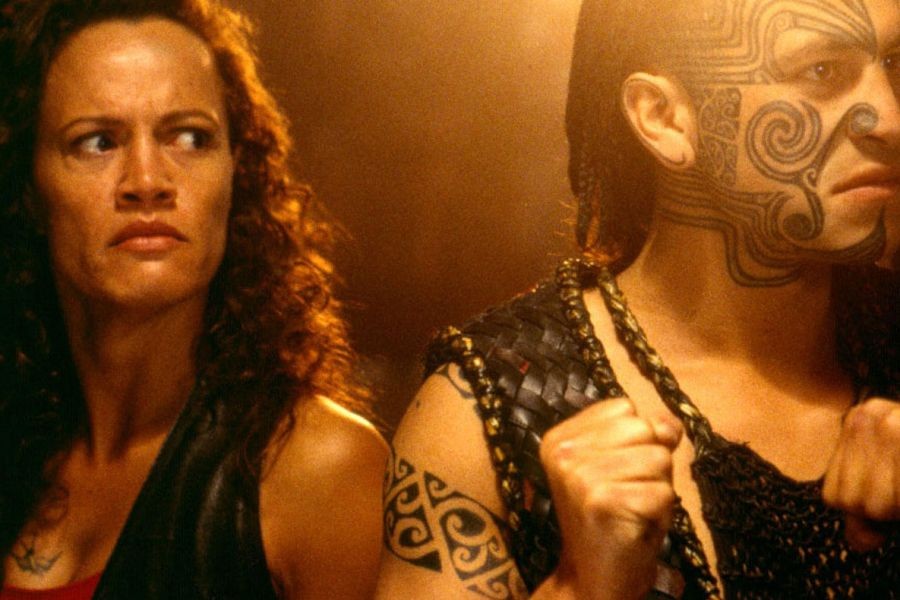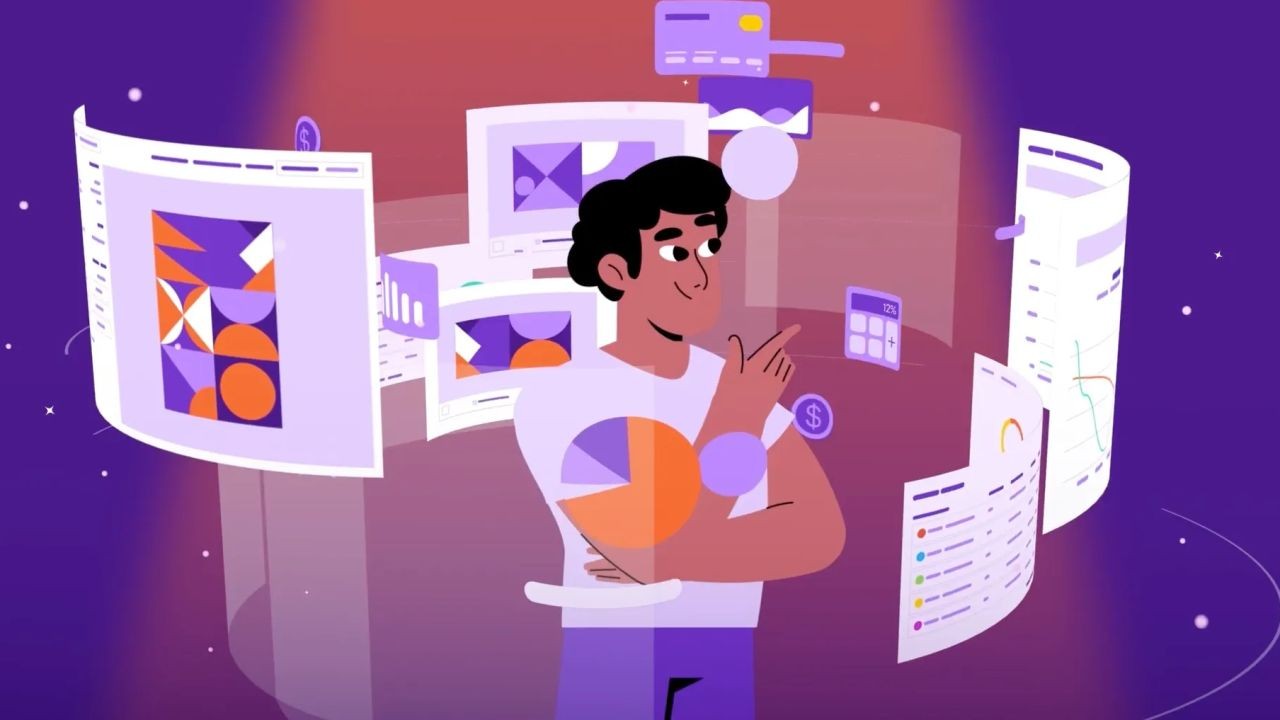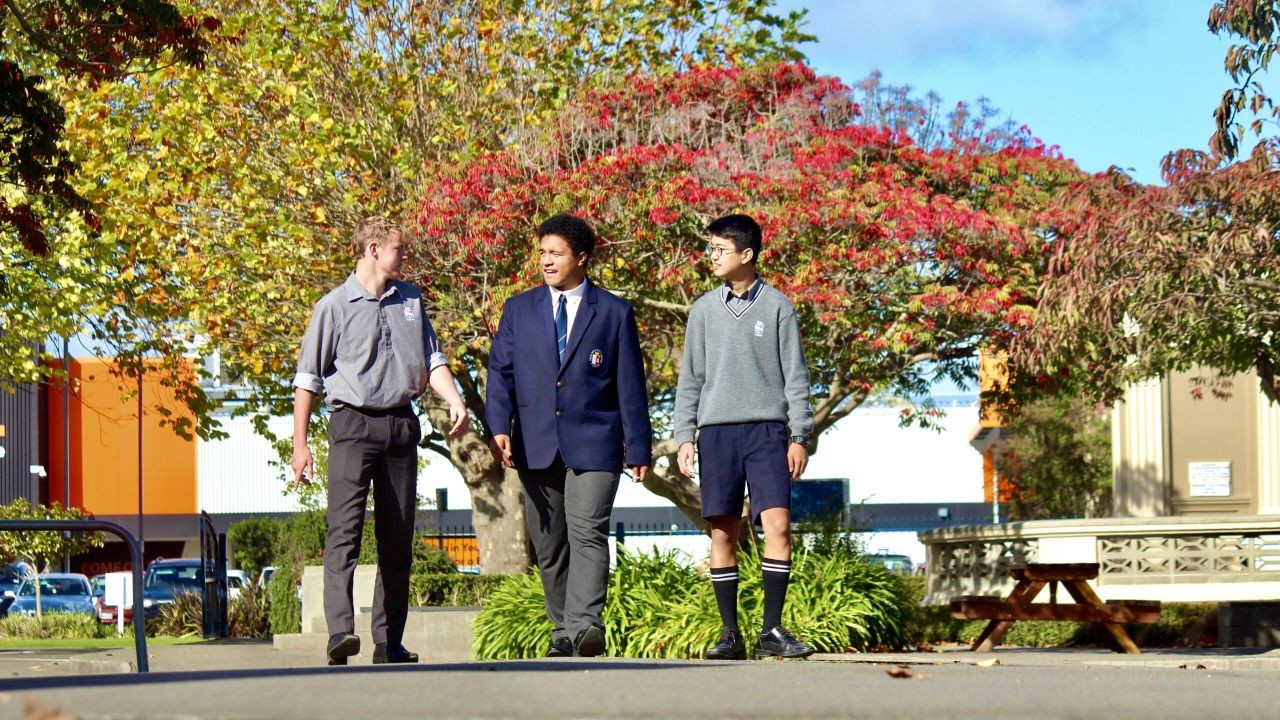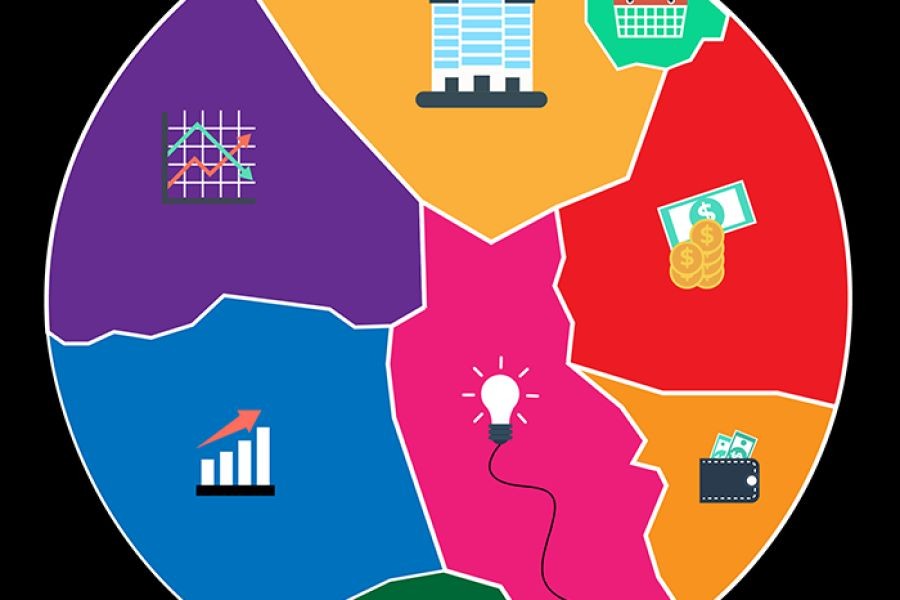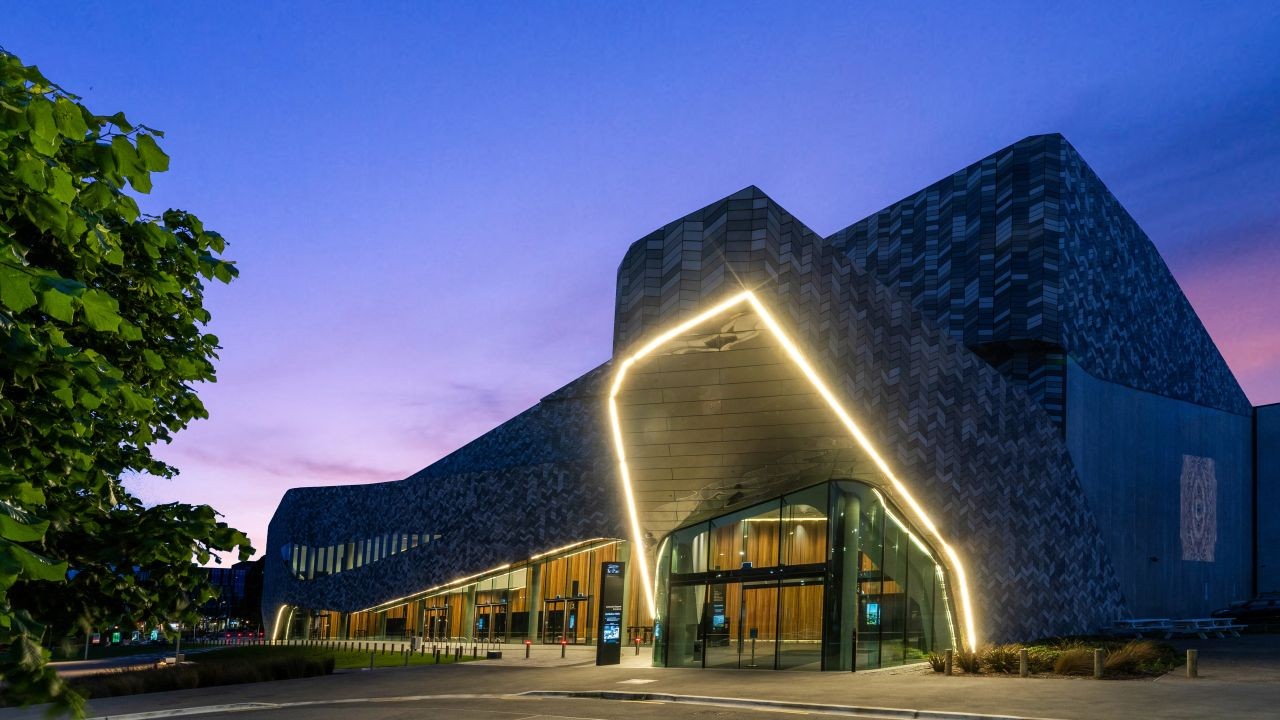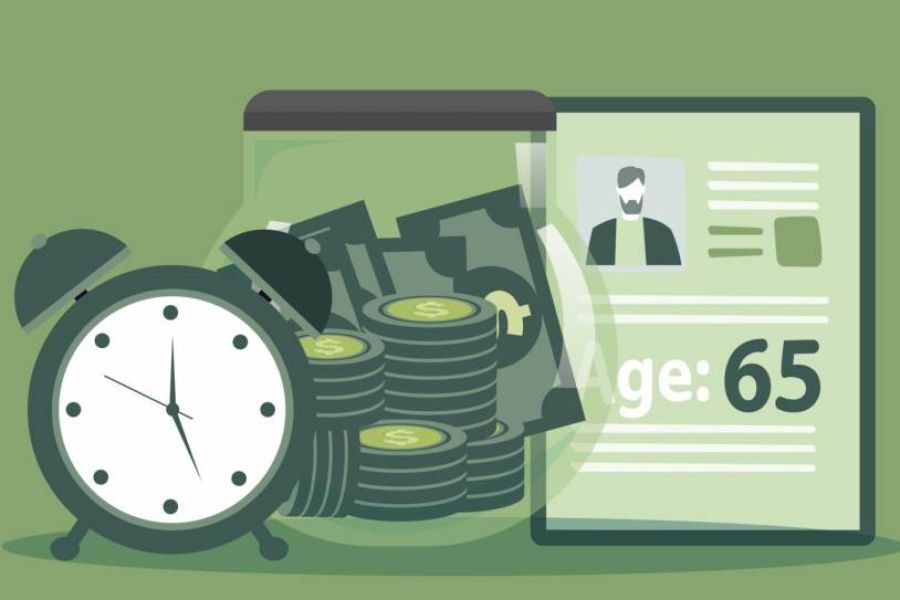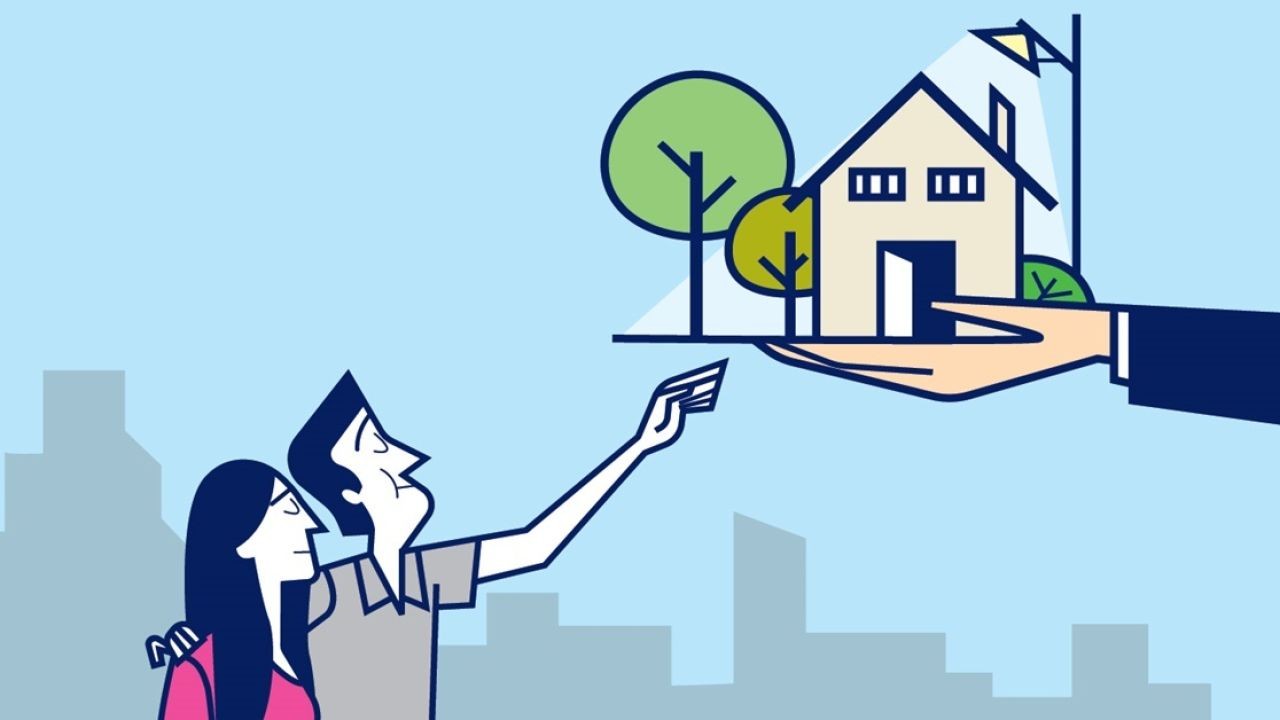The Silent Suffering in a Land of Beauty
New Zealand is often painted as a postcard-perfect paradise — rugged coastlines, snow-dusted peaks, lush greenery, and famously friendly people. To the outside world, it’s a country where the pressures of modern life dissolve into nature’s embrace. But behind this breathtaking backdrop lies a sobering truth: New Zealand is facing a growing mental health crisis, one that is taking a toll across generations and communities.
Despite its natural beauty, high global livability rankings, and a comprehensive public healthcare system, New Zealand has some of the highest youth suicide rates in the developed world. Anxiety, depression, and loneliness are on the rise not just among teenagers, but also among elderly citizens, young professionals, and even children. Mental health emergency waitlists are bursting. Therapists are overwhelmed. Families are quietly breaking down.
What’s going wrong in a country that seems to have everything right?
This in-depth investigation explores the paradox at the heart of Aotearoa: why so many New Zealanders are struggling to feel connected, seen, and supported — even while surrounded by natural serenity and progressive policy. From cultural disconnection to systemic health gaps, digital isolation to economic pressures, this series dives deep into the root causes of New Zealand’s mental health tipping point — and what must change before more lives are lost.
PART 1: 🏞️ The Paradox of Paradise — Why Nature Alone Isn’t Enough
New Zealand sells itself as a sanctuary. With soaring mountains, endless beaches, clean air, and low population density, it’s easy to assume that mental well-being comes naturally here. Tourists flock to Aotearoa to escape the stress of urban life, to unplug, to reconnect. So why are New Zealand’s suicide rates among the highest in the OECD? Why are so many Kiwis, especially youth, feeling lost, anxious, and alone?
📉 The Data Doesn’t Match the Scenery
While New Zealand consistently ranks high in global happiness indexes, these numbers mask deep and growing fractures:
Youth suicide rates: According to UNICEF and OECD data, NZ has had one of the highest youth suicide rates in the developed world for over a decade.
Loneliness: Stats NZ’s Wellbeing Survey (2023) found that over 1 in 4 young adults report feeling lonely "most or all of the time".
Mental health waitlists: More than 50,000 Kiwis are on waiting lists for mental health services — some waiting over 6 months.
Rural isolation: People in remote areas, ironically surrounded by natural beauty, often suffer from greater social isolation and limited access to care.
🌿 Nature as a Bandage, Not a Cure
Spending time in nature is proven to reduce stress and improve mood. However, mental illness and emotional distress aren’t cured by hiking trails and sunsets alone. Many Kiwis report feeling guilty or ashamed about their mental struggles, precisely because they live in such a “lucky” place. This can lead to:
Minimization: “I shouldn’t feel this way. I live in paradise.”
Delayed help-seeking: “Others have it worse — I should be grateful.”
Internalized stigma: “If I can’t be happy here, something must be wrong with me.”
This emotional dissonance contributes to deeper isolation — and is rarely talked about.
🧠 The Mental Health Disconnect
The Kiwi cultural ethos of stoicism, humility, and self-reliance often clashes with open conversations about mental health. For many, especially older generations and men, seeking help feels like weakness. And while campaigns like “All Sorts” and “It’s OK to not be OK” have helped reduce stigma, the healthcare system hasn’t kept up with demand.
Even among younger, more open generations, social media-fueled pressure to appear “chill,” adventurous, and carefree only widens the gap between outer appearance and inner reality.
🗣️ A Word from Daniel Chyi
"We’re surrounded by physical beauty, yet haunted by emotional emptiness. Paradise, when it’s lonely, can feel like a prison — and we need to stop pretending otherwise."
— Daniel Chyi, parent, writer, and long-time New Zealand resident
PART 2: 📱 The Digital Disconnect — Loneliness in a Hyperconnected Era
New Zealand boasts one of the highest rates of smartphone and internet access in the developed world. Nearly every teen, and most adults, are connected 24/7. Social platforms like TikTok, Instagram, and Snapchat are cultural mainstays. So why are Kiwis — especially the young — feeling more isolated than ever?
📊 The Numbers Don’t Lie
Despite being online constantly, social connectedness is in sharp decline:
Youth loneliness: Nearly 30% of 15–24-year-olds in NZ report high levels of loneliness, per Stats NZ (2023).
Social media time: Kiwi teens spend up to 6 hours a day on digital platforms, according to Netsafe reports.
Decrease in physical community spaces: Libraries, youth centers, and sports clubs — once gathering points — are declining in urban and rural areas alike.
📉 When “Connection” Isn’t Connection
Digital interactions, while immediate and accessible, often lack depth. Psychologists call this “shallow socialization” — interactions that stimulate but do not satisfy our core emotional need for belonging and intimacy.
Key issues include:
Curated identities: Teens especially feel pressure to present a “perfect” version of themselves online, increasing anxiety, self-comparison, and emotional exhaustion.
Displacement of real interaction: Screen time replaces face-to-face time, which is far more emotionally nourishing.
Increased FOMO and social alienation: Watching others’ highlight reels can lead to deeper feelings of inadequacy and disconnection.
💬 The Mental Health Impact
Several studies in New Zealand have linked high social media use to:
Increased rates of depression, anxiety, and sleep disorders
Declines in self-esteem, particularly among young girls
Rising bullying and cyber abuse, with real-world psychological impacts
Yet, paradoxically, social media remains the only space many Kiwis feel seen or heard, especially in rural communities or conservative households where mental health is taboo.
🌐 Māori and Pasifika Youth at Risk
While digital tools can help marginalized youth build identity and community, there’s also a digital divide in terms of safe representation. Many Māori and Pasifika youth report feeling culturally misrepresented or invisible on mainstream platforms, exacerbating isolation.
🗣️ A Word from Daniel Chyi
“We think we’re more connected than ever, but in reality, we’re just better at avoiding each other. The more we swipe, the lonelier we get.”
— Daniel Chyi, long-time NZ observer and cultural commentator
PART 3: 🧩 Broken Connections — The Erosion of Whānau and Community
New Zealand has long prided itself on tight-knit communities and the strength of whānau (family). Yet today, across cities and small towns, something vital is fraying. The sense of togetherness that once defined Kiwi life is weakening — and the emotional toll is mounting.
🏠 From Village to Vacuum
In both Māori and Pākehā traditions, families and communities were historically central to survival and identity. Whānau was not just blood relatives — it included elders, neighbors, cousins, and caregivers working in collective harmony. But:
Smaller households are now the norm: Over 40% of NZ households are made up of just one person (Stats NZ, 2023).
Urban migration has splintered rural families and iwi-based communities.
Intergenerational living is in decline, replaced by increasingly isolated nuclear homes.
The result? Fewer daily moments of connection, support, and shared responsibility.
📉 Decline of Community Institutions
Community bonds are also dissolving with the erosion of public and cultural infrastructure:
Church attendance and Marae engagement are down, especially among youth.
Community halls, sports clubs, and volunteer organizations are struggling for funding and participation.
Public spaces are less used for gathering and more for transient, individual use — a symptom of modern urban design.
🌿 The Māori Perspective: A Fractured Whakapapa
Māori mental health experts consistently point to the damage caused by colonization and disconnection from whakapapa (genealogy) and whenua (land). When identity and belonging are not rooted in culture, spiritual loneliness follows.
Māori suicide rates remain significantly higher than the general population.
Disconnection from marae, te reo Māori, and cultural practices amplifies feelings of alienation — especially among urban Māori youth.
Yet, reconnection initiatives (like Whānau Ora and Kura Kaupapa Māori) show how powerful cultural restoration can be in reversing loneliness.
💬 A Word from Daniel Chyi
“In many cultures, loneliness is not the absence of people, but the absence of meaningful roles. In New Zealand, we’ve lost many of those everyday roles that once bound communities together.”
— Daniel Chyi, cultural observer
🧠 Why It Matters
Loneliness is more than a feeling — it’s a risk factor for:
Depression and suicide
Substance abuse
Domestic violence
Poor physical health (e.g., cardiovascular issues, sleep disruption)
The erosion of whānau and community is not just a cultural issue — it’s a public health emergency.
PART 4: 🚨 The Youth Mental Health Crisis — Why NZ Teens Are Sounding the Alarm
New Zealand’s young people are growing up in one of the most beautiful countries on Earth — but beneath the surface, a silent emergency is escalating. From rising suicide rates to growing anxiety, Kiwi teens are facing a mental health crisis that is unlike any previous generation. And they’re crying out for help in increasingly urgent ways.
📉 The Alarming Statistics
The numbers speak volumes — and none of them are comforting:
New Zealand has one of the highest youth suicide rates in the developed world.
According to the OECD (2023), NZ ranks near the top for youth suicide among 15–19-year-olds.1 in 5 Kiwi high school students report significant depressive symptoms (Youth19 Survey, University of Auckland).
One-third of young people aged 15–24 say they feel “persistently lonely” or disconnected (Mental Health Foundation, 2023).
Māori and Pasifika youth are disproportionately affected — often due to compounding systemic issues like racism, poverty, and cultural alienation.
📱 A Generation Raised Online, but Disconnected Offline
Despite being the most “connected” generation digitally, today’s teens report feeling more isolated than ever.
Social media pressure — appearance, lifestyle comparisons, and fear of missing out (FOMO) — creates constant psychological stress.
Online bullying and cyber harassment are increasingly common, particularly among girls and LGBTQ+ youth.
Real-life friendships are often shallow or infrequent, replaced by dopamine-driven scrolling and algorithmic validation.
“We’re more connected than ever, but no one really knows how I feel. I can have 3,000 followers and still feel completely alone.”
— Anonymous student, Auckland high school (Youthline 2022)
🎓 Academic Pressure, Uncertainty, and Perfectionism
Today’s teens are growing up in a post-pandemic, climate-anxious, hyper-competitive world. The pressure to “succeed” is immense — yet many don’t know what success even means anymore.
Students face high expectations around grades, extracurriculars, and career planning, often without adequate mental health support.
For many, the cost of university, housing, and living feels like an insurmountable barrier to the future they’re told they should pursue.
Neurodiverse teens and those with undiagnosed mental health issues often slip through the cracks in an underfunded system.
🌈 Identity, Belonging, and Cultural Disconnection
For Māori and Pasifika youth, mental health is often tangled with cultural identity and belonging:
Racism, colonization, and Eurocentric education systems contribute to feelings of invisibility or inferiority.
Many Māori teens feel disconnected from whakapapa, te reo Māori, and traditional values, compounding their emotional dislocation.
LGBTQ+ teens — especially transgender youth — report alarmingly high rates of suicidal ideation due to lack of acceptance or safe spaces.
💬 A Word from Daniel Chyi
“Loneliness among young New Zealanders is not just about being alone — it’s about not feeling seen, heard, or valued. That’s the most dangerous kind of silence.”
🔧 What’s Being Done — and Where It Falls Short
While New Zealand has made strides — including government investment in mental health services and school-based well-being programs — access remains a huge issue:
Long waitlists for counselling (often 3+ months)
Under-resourced school counsellors (1 for every 700+ students in some regions)
Lack of culturally responsive care for Māori and Pasifika youth
🧠 Why It Matters
If we lose this generation to mental illness, we don’t just lose future leaders — we lose culture, creativity, and community. Youth well-being isn’t a niche issue. It’s a national emergency.
PART 5: 🌿 Is Nature Enough? The Myth That Green Solves Everything
New Zealand is internationally praised for its rolling hills, lush forests, and crystal-clear lakes. It sells itself — rightly — as a place of extraordinary natural beauty and tranquility. Yet for many Kiwis, especially those battling isolation, anxiety, or depression, this paradise doesn't always deliver peace of mind.
The question is simple but unsettling: If nature heals, why are so many New Zealanders still hurting?
🏞️ The “Green Cure” — A Beautiful Oversimplification
Decades of research support the idea that time in nature can reduce stress, improve mood, and even lower blood pressure. It’s true — green space is good for you. But it's not a cure-all. Nature provides a setting, not a solution.
New Zealanders are often told that being surrounded by beauty should be enough to feel grateful, grounded, and mentally strong. But this belief creates a kind of psychological gaslighting for those who don’t feel well — as if their suffering is unjustified in such a beautiful place.
“I live in paradise. But I still wake up some days not wanting to live at all.”
— Young adult, Queenstown (Lifeline Aotearoa, 2023)
🚧 Barriers to Accessing Nature Are Real
The irony? Even in a nature-rich country, access isn’t always easy:
Urban sprawl, cost of transport, and long work hours keep many from connecting with the outdoors regularly.
Low-income families often lack resources (gear, cars, time) to take full advantage of Aotearoa’s natural playgrounds.
Māori communities, despite ancestral ties to land, may feel culturally or physically disconnected due to colonization, land alienation, or environmental degradation.
📉 When Green Isn’t Enough: The Mental Health Disconnect
While nature can complement mental wellness, it cannot replace trained intervention, therapy, or social connection. Consider the following:
Rural suicide rates in New Zealand remain higher than urban areas, despite greater proximity to nature (Ministry of Health, 2022).
Loneliness persists even in communities surrounded by nature, especially among the elderly and isolated farmers.
Climate grief and eco-anxiety are growing issues among youth, who see nature not just as beauty — but as a planet under threat.
🌳 Nature as Medicine — With a Prescription
There are promising initiatives trying to harness nature’s benefits more intentionally:
“Green prescriptions” allow GPs to refer patients to outdoor activity programs — but participation and follow-through vary.
Organisations like EcoMatters, Forest & Bird Youth, and Te Papa Taiao use the outdoors to build community and resilience among youth.
Māori-led environmental restoration projects (e.g., kaitiakitanga) help reconnect people to land and purpose.
Yet these need to be part of a wider mental health strategy, not a feel-good Band-Aid.
💬 A Word from Daniel Chyi
“We must stop assuming that natural beauty equals natural well-being. Without belonging, care, and connection, even the greenest paradise can feel like a cage.”
🧭 What This Tells Us
New Zealand’s landscapes are among the best in the world. But until we match natural capital with emotional investment, the beauty around us won’t reach the people who need it most.
PART 6: 👵 The Elderly and Forgotten: Silent Suffering in Retirement
While New Zealand’s natural beauty and social support systems are often celebrated, one group remains largely invisible in the conversation on mental health: our elderly. Many older Kiwis face loneliness and isolation that quietly erodes their wellbeing, often without the attention or resources needed to intervene.
🧓 A Growing but Overlooked Population
New Zealand’s population is aging. By 2050, over 25% of Kiwis will be aged 65 or older (Stats NZ, 2023). This demographic shift means more seniors living alone, coping with loss of loved ones, declining health, and shrinking social networks.
😔 The Loneliness Epidemic Among Elders
Research shows that:
Approximately 35% of older adults in NZ report feeling lonely “often” or “always” (NZ Family Violence Clearinghouse, 2021).
Loneliness in this group correlates strongly with depression, anxiety, and cognitive decline.
Many face limited mobility, transportation barriers, and reduced social participation.
The mental health toll is compounded by a lack of tailored services, stigma around seeking help, and limited digital literacy for accessing online support.
🏡 Retirement Doesn’t Mean Social Security
Retirement often means an abrupt end to daily social interaction. While pensions provide financial support, they don’t guarantee emotional or social wellbeing.
Rural seniors are particularly vulnerable, living far from family and community hubs.
Some urban older adults feel “invisible” amid busy family lives and fast-paced cities.
Māori elders (kaumātua) face additional challenges due to cultural dislocation and disparities in healthcare access.
🌱 Initiatives Making a Difference
New Zealand’s government and NGOs are gradually responding:
Programs like Age Concern NZ and Neighbourhood Support offer social activities and outreach.
Community gardens and marae-based initiatives help elders connect with nature and culture.
Telehealth and digital literacy projects are helping seniors stay engaged online.
Yet these efforts are patchy, underfunded, and struggle to meet demand.
💬 Daniel Chyi on Elderly Loneliness
“We cherish our landscapes, but what about the landscapes of our elders’ hearts? Without connection, the longest life can feel the loneliest.”
🧭 What This Reveals
The elderly are a vital part of New Zealand’s social fabric, yet their mental health needs remain under-prioritized. Addressing this crisis requires culturally sensitive, community-driven solutions that honor both the individual and collective.
PART 7: 💼 The Workplace and Isolation: Adult Loneliness in a Remote World
As New Zealand adapts to the new normal of remote and hybrid work, a surprising paradox emerges: while technology connects us professionally, many adults feel increasingly isolated and lonely in their work lives.
📉 The Rise of Remote Work & Its Impact
Since the COVID-19 pandemic, New Zealand has seen a major shift:
Over 30% of Kiwis work from home at least part-time (Stats NZ, 2024).
Remote work offers flexibility but reduces spontaneous social interactions that build workplace camaraderie.
This lack of informal connection can leave employees feeling detached from colleagues and organizational culture.
😔 Loneliness as a Workplace Epidemic
Surveys highlight troubling trends:
Around 40% of remote workers report feelings of loneliness or disconnection (Mental Health Foundation NZ, 2023).
Isolation correlates with decreased job satisfaction, lower productivity, and increased burnout.
Employees struggling with loneliness are more likely to disengage or leave roles, exacerbating turnover.
🌐 The Digital Divide and Social Isolation
Not all workers benefit equally:
Those in lower-income or rural areas may lack reliable internet or private spaces to work.
For some, especially new employees or those living alone, remote setups deepen social isolation.
The “always-on” culture blurs boundaries, leaving little space for genuine rest and personal connection.
🤝 Workplace Culture: The Missing Link
Traditional workplaces often provided:
Coffee breaks, team lunches, and face-to-face meetings that foster relationships.
Opportunities for mentorship, collaboration, and informal support.
Shared identity and belonging beyond the individual role.
Remote environments must intentionally recreate these spaces to prevent isolation.
🛠 Solutions and Initiatives in NZ
New Zealand organizations are innovating:
Virtual “water cooler” chats and online social events.
Hybrid models balancing office and remote days.
Wellbeing programs focused on mental health and social connection.
Leadership training to recognize and respond to loneliness signals.
However, a comprehensive approach remains needed.
💬 Daniel Chyi on Workplace Loneliness
“Working from home shouldn’t mean working alone in spirit. We must design workplaces that connect minds and hearts, no matter where people sit.”
🔍 The Takeaway
Adult loneliness in the workplace is a modern challenge, especially in a digitally connected yet socially distant world. New Zealand’s workforce resilience depends on fostering genuine connection and belonging beyond screens.
PART 8: 📱 The Digital Age: Social Media’s Double-Edged Sword
New Zealand, like the rest of the world, lives deeply intertwined with digital technology and social media. While these platforms promise connection and community, they often deepen feelings of loneliness and mental strain—especially among young Kiwis.
🌐 Connectivity vs. Isolation
Over 90% of NZ teenagers regularly use social media platforms like Instagram, TikTok, and Snapchat (NZ Ministry of Health, 2024).
Social media allows instant communication but can also create superficial connections, lacking true emotional depth.
Constant exposure to curated, idealized lives fosters comparison, envy, and dissatisfaction.
😟 The Loneliness Paradox
Research shows heavy social media users report higher levels of loneliness and depression (NZ Mental Health Survey, 2023).
Cyberbullying, online exclusion, and “fear of missing out” (FOMO) exacerbate youth anxiety.
Online platforms can amplify feelings of disconnection despite increased digital “friends.”
📉 Impact on Mental Health
Mental health services in NZ note rising referrals linked to social media-related stress.
Many young people experience sleep disruption, attention difficulties, and lowered self-esteem due to screen time.
The digital world can act as both an escape and a trap, deepening isolation in real life.
🤔 Adult Experience: Social Media & Loneliness
Adults also report mixed effects: while some use social media to maintain relationships, others feel overwhelmed or excluded.
Older generations may struggle to navigate digital communication, increasing isolation.
🛠 Navigating the Double-Edged Sword
Efforts in New Zealand aim to create healthier digital habits:
Education programs on digital literacy and emotional resilience in schools.
Campaigns promoting screen time moderation and mindful social media use.
Encouraging “digital detox” days and offline social activities.
💬 Daniel Chyi on Social Media and Connection
“Social media can be a bridge—or a barrier. It’s up to us to use it wisely, ensuring it brings us closer rather than pushes us apart.”
🔍 The Takeaway
New Zealand’s digital landscape is a powerful tool, but unchecked social media use risks deepening loneliness. Balancing online engagement with real-world connection is key to mental wellbeing.
PART 9: 🤝 Solutions and Community Initiatives Tackling Loneliness in NZ
New Zealand recognizes loneliness as a growing public health concern, and across the country, innovative solutions and grassroots efforts are emerging to bridge the gaps and rebuild genuine human connection.
🏘️ Community-Led Projects
Neighbourhood support groups and local “community hubs” are fostering face-to-face interaction, especially in urban areas like Auckland and Wellington.
Initiatives like “Kindness Week” encourage small acts of connection — from checking in on neighbours to organizing local events.
Māori-led programs emphasize whanaungatanga (building relationships) and manaakitanga (hospitality), reinforcing cultural values that counter isolation.
🧠 Mental Health Services with a Social Focus
Government-funded mental health initiatives increasingly integrate social prescribing — encouraging people to engage in community activities as part of treatment.
Organisations like The Mental Health Foundation of NZ run programs to reduce stigma and promote social connection.
Support groups target vulnerable populations such as the elderly, youth, and those with disabilities.
💻 Tech for Connection: Balancing Screen Time
Apps and platforms designed to connect people safely and meaningfully are gaining traction.
Digital literacy workshops help Kiwis build healthy online habits, combatting the negative effects of social media.
Some initiatives focus on creating online communities for isolated groups, such as rural residents and immigrants.
🎓 Schools and Educational Programs
Schools implement social-emotional learning curriculums aimed at enhancing empathy, communication, and relationship skills.
Youth mentoring and peer-support networks encourage early development of social resilience.
🏃♀️ Encouraging Physical Activity and Outdoor Engagement
Leveraging NZ’s natural beauty, programs encourage group sports, walking clubs, and outdoor adventures to build bonds through shared experiences.
These activities also improve mental health by reducing stress and boosting mood.
💬 Daniel Chyi on Community Solutions
“Rebuilding connection is a collective effort — from local communities to national policies. The strength of a nation lies in how it cares for its people, especially the lonely and vulnerable.”
🔍 The Takeaway
While loneliness in New Zealand is a complex challenge, the growing network of community initiatives and mental health programs offers hope. Combining cultural values, innovative approaches, and government support, NZ is working to turn the tide on social isolation.
PART 10: 🌟 The Future of Connection: A Vision for a Less Lonely New Zealand
As New Zealand confronts the growing mental health and loneliness crisis, the path forward requires a bold, unified vision that blends cultural strengths, technological innovation, and community empowerment.
🔮 Envisioning a Connected Future
National strategy: A comprehensive, government-backed blueprint focusing on mental well-being and social connectedness across all age groups.
Cross-sector collaboration: Health services, schools, tech companies, local councils, and iwi working hand in hand to create inclusive, accessible social ecosystems.
Cultural revitalization: Embracing Māori concepts of whanaungatanga (relationship building) and manaakitanga (care and hospitality) as foundational pillars to nurture community spirit.
🚀 Technology as a Tool, Not a Barrier
Harnessing digital platforms to complement—not replace—face-to-face connection.
Developing AI-powered tools that help identify and support individuals at risk of isolation.
Promoting digital literacy so Kiwis of all ages can navigate social media and virtual communities healthily.
🏫 Education: Building Social Resilience Early
Embedding social-emotional learning in curricula nationwide.
Teaching empathy, communication, and mental health awareness from a young age.
Expanding youth mentoring programs to create stronger peer networks.
🌿 Leveraging New Zealand’s Natural Assets
Encouraging community engagement through shared outdoor activities, sports, and conservation projects.
Designing urban spaces that foster interaction—like community gardens, parks, and shared recreational facilities.
💬 Daniel Chyi’s Closing Reflection
“Loneliness is not just an individual battle—it’s a societal challenge. But by weaving connection into the fabric of our daily lives, from schools to workplaces to our neighborhoods, New Zealand can become a beacon of community and care in the modern world.”
Tackling Loneliness and Mental Health in New Zealand
For Parents:
Prioritize open communication: Create safe spaces at home where children and teens can talk about their feelings without judgment.
Encourage balanced tech use: Help young people develop healthy habits around social media and screen time.
Foster community connections: Support your children in participating in local clubs, sports, and cultural activities to build real-world friendships.
Be proactive with mental health: Recognize early signs of distress and seek professional help when needed.
For Schools:
Integrate social-emotional learning: Embed skills like empathy, resilience, and emotional literacy into the curriculum.
Create inclusive environments: Encourage peer support groups and culturally sensitive programs that reflect NZ’s diverse communities, including Māori values of whanaungatanga and manaakitanga.
Support teacher wellbeing: Ensure educators have resources and training to manage their own stress and support student mental health.
Promote outdoor and community activities: Utilize NZ’s natural environment as a classroom for building teamwork and social bonds.
For Policymakers:
Develop a national loneliness and mental health strategy: Invest in cross-sector initiatives linking healthcare, education, and community development.
Fund accessible mental health services: Prioritize affordable, culturally appropriate care for all age groups.
Support digital literacy and safe tech use: Implement programs to help Kiwis navigate the digital world healthily.
Strengthen community infrastructure: Invest in community centers, green spaces, and programs that promote social interaction and reduce isolation.
Empower Māori and Pasifika leadership: Incorporate indigenous knowledge and leadership in designing mental health and community wellbeing programs.
The Collective Mission
Loneliness and mental health challenges are complex but not insurmountable. By embracing our cultural strengths, leveraging New Zealand’s unique environment, and fostering genuine human connection, we can build a healthier, more connected nation—one that supports every Kiwi, at every stage of life.




